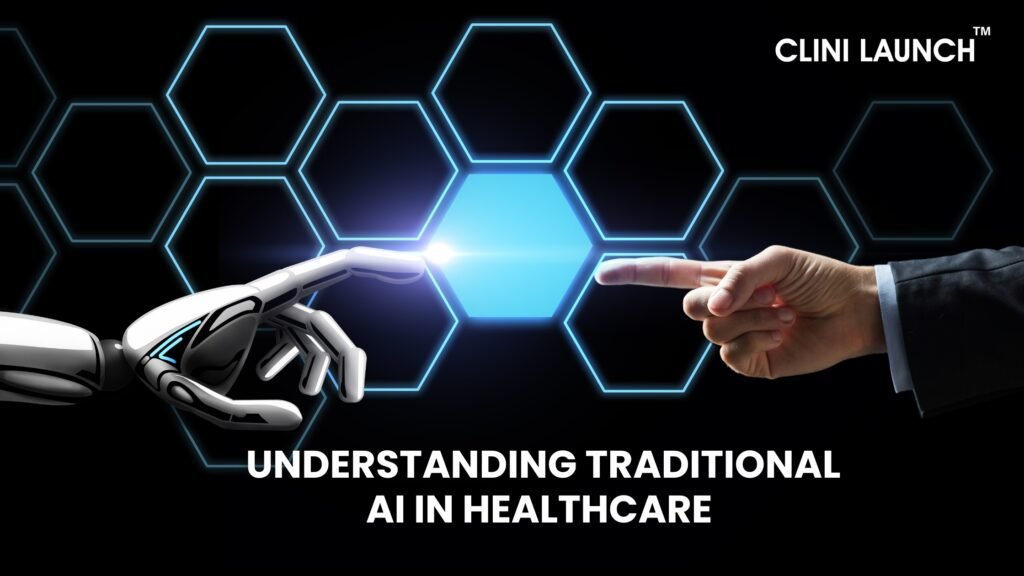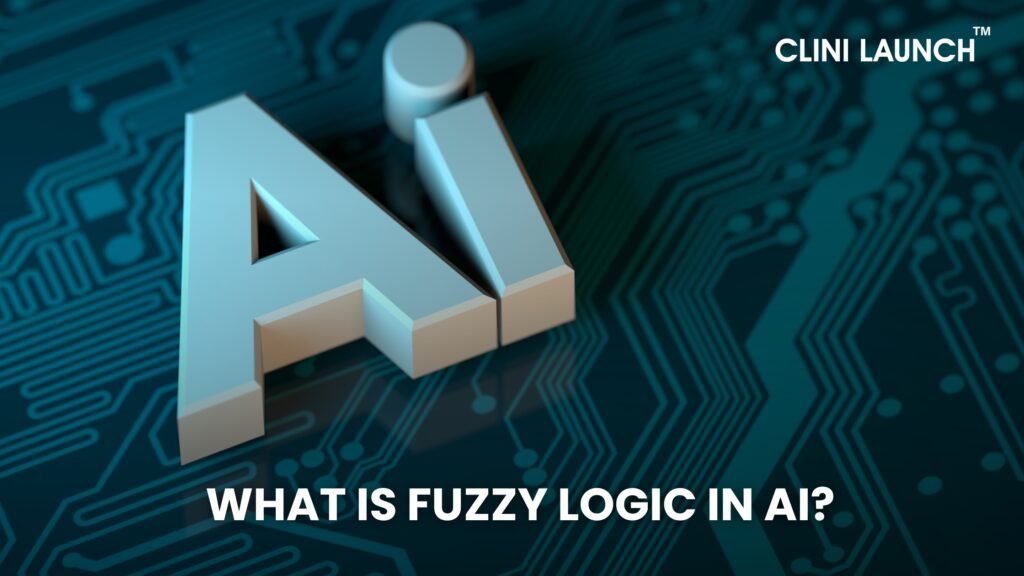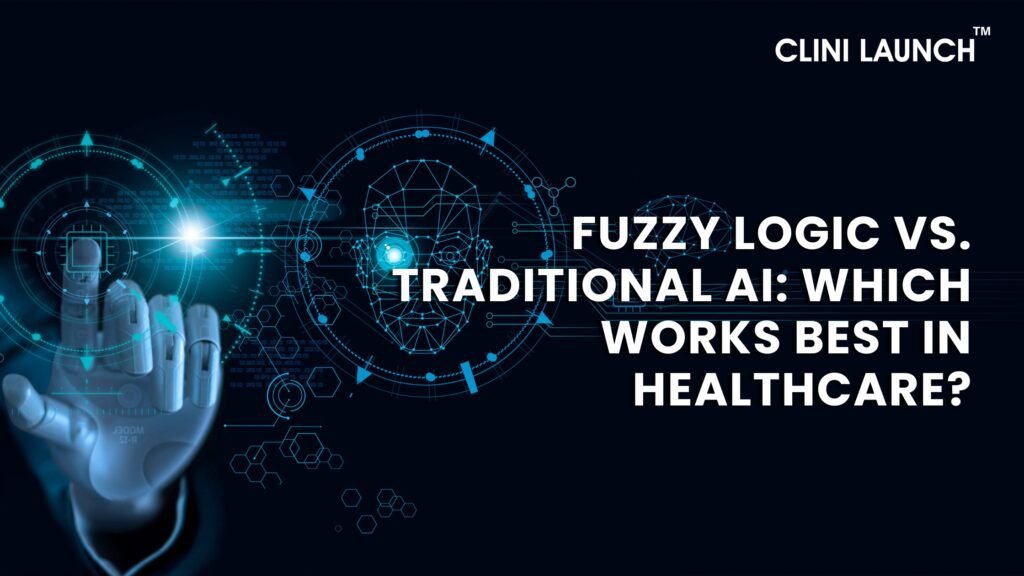Introduction
Artificial Intelligence (AI) is reshaping the healthcare industry, enhancing diagnosis, treatment, and patient care. From machine learning algorithms detecting diseases to robotic surgery assisting doctors, AI-driven innovations are making healthcare more efficient. However, not all AI systems function the same way.
Traditional AI relies on strict rules and large datasets, making it highly effective for structured tasks. On the other hand, fuzzy logic provides a more flexible, human-like approach to decision-making by handling uncertainty and inaccuracy.
This blog will explore the differences between fuzzy logic and traditional AI in healthcare, analyze their strengths and weaknesses, and determine which approach is better suited for different medical applications.
Understanding Traditional AI in Healthcare

What is Traditional AI?
Traditional AI, including machine learning (ML) and deep learning (DL), relies on structured data and predefined rules to make decisions. These systems learn patterns from large datasets and make predictions based on past information.
How Traditional AI Works in Healthcare
Artificial intelligence is rapidly transforming the healthcare industry, with applications ranging from medical imaging to robotic surgery. AI-powered tools like IBM Watson and Google’s DeepMind are being used to analyze medical images such as X-rays, MRIs, and CT scans to detect diseases like cancer and fractures with greater accuracy and speed.
Machine learning models are also being used to predict patient outcomes, such as the risk of heart disease, based on medical history and lifestyle factors.
This allows for more personalized and proactive healthcare interventions. In the operating room, AI-assisted robotic systems are enhancing surgical precision and minimizing human error in complex procedures. These advancements are leading to improved patient outcomes, more efficient healthcare delivery, and a future where AI plays an integral role in medicine
For instance, in England the implementation of AI tool called C the signs in GP practices increased cancer detection rates from 58.7% to 66.0%.
Strengths of Traditional AI in Healthcare
- High Accuracy: Deep learning models can achieve accuracy rates exceeding human expertise in imaging diagnostics.
- Automation: AI simplifies administrative tasks, reducing workload for medical staff.
- Pattern Recognition: Traditional AI excels at identifying patterns in large datasets, making it ideal for diagnostic applications.
Despite its strengths, traditional AI struggles with uncertainty and incomplete data, which is where fuzzy logic in AI becomes advantageous.
Enroll now: PG in AI & ML in Healthcare
What is Fuzzy Logic in AI?

Understanding Fuzzy Logic
Fuzzy logic is an AI technique that impersonates human reasoning by dealing with uncertainty and inaccuracy. Unlike traditional AI, which relies on binary decisions (0 or 1, true or false), fuzzy logic in AI allows for intermediate values, considering various degrees of truth.
For example, instead of labeling a patient’s temperature as simply “high” or “normal,” fuzzy logic might classify it as “slightly high,” “moderately high,” or “very high.”
How Fuzzy Logic Works in Machine Learning & Healthcare
It is a valuable tool in medicine due to its ability to handle uncertainty and make nuanced decisions. Fuzzy logic applications in healthcare helps doctors consider multiple overlapping symptoms and make more informed judgments in medical diagnosis. It also plays a significant role in drug dosing systems, where precise dosages are determined based on individual patient factors. Additionally, these applications are used in ICU monitoring to analyze fluctuating patient data in real-time and predict potential deterioration, enabling timely interventions.
A study employing Fuzzy Cognitive Maps (FCMs) for coronary artery disease (CAD) prediction reported an accuracy of 78.2%, outperforming several modern classification algorithms.
Strengths of Fuzzy Logic in Healthcare
- Handles Uncertainty: Works well when dealing with incomplete or noisy medical data.
- Mimics Human Reasoning: Makes intuitive and interpretable decisions similar to experienced doctors.
- Adaptability: Can work with smaller datasets, unlike traditional AI models that require massive amounts of data.
Key Differences: Fuzzy Logic vs. Traditional AI
| Feature | Traditional AI | Fuzzy Logic AI |
| Decision-making | Binary, rule-based | Handles uncertainty & inaccuracy |
| Data requirements | Needs large datasets | Works well with limited data |
| Adaptability | Less flexible to new conditions | More adaptable to complex scenarios |
| Human-like reasoning | Imitate patterns, but strict | Closer to human decision-making |
| Medical Applications | Radiology, disease prediction | Diagnosis support, personalized treatment |
Key Takeaway: While traditional AI excels in structured tasks like medical imaging and automation, fuzzy logic in AI is better suited for decision-making under uncertainty and patient-specific care.
Use Cases: When to Use Fuzzy Logic vs. Traditional AI
When Traditional AI is Better
AI is transforming healthcare in several keyways. One major application is in medical imaging analysis, where AI-powered deep learning models can analyze vast amounts of radiology scans to detect tumors or fractures with high accuracy. This can assist radiologists in making faster and more accurate diagnoses.
Another important area is predictive modeling for diseases. Traditional AI models can analyze patient data, including medical history, lifestyle factors, and genetic information, to predict the likelihood of developing conditions like diabetes or heart disease. This allows for early interventions and personalized prevention strategies.
AI is also being used to automate hospital workflows. This includes optimizing appointment scheduling, managing medical inventory, and streamlining administrative tasks. By automating these processes, hospitals can improve efficiency, reduce costs, and free up healthcare professionals to focus on patient care.
When Fuzzy Logic in Healthcare is Better
Fuzzy logic is a branch of mathematics that deals with uncertainty. It has been used in a variety of medical applications, including situations with incomplete data, personalized treatment plans, and ICU monitoring and decision support. In situations with incomplete data, fuzzy logic in healthcare can be used to make predictions even when some information is missing or uncertain. This can be helpful in cases where a patient’s medical history is incomplete or when test results are inconclusive.
Fuzzy logic can also be used to create personalized treatment plans. By taking into account a patient’s individual characteristics and preferences, fuzzy logic can help doctors recommend the most effective course of treatment.
In the ICU, fuzzy logic can be used to monitor patients and provide decision support to doctors. By analyzing a patient’s vital signs and other data, fuzzy logic in medicine can help doctors identify potential problems and make timely interventions.
Hybrid Approach: Combining Fuzzy Logic & AI
Many researchers advocate for a hybrid model that combines traditional AI with fuzzy logic in healthcare for optimal decision-making.
For example:
- AI models detect patterns in medical images.
- Fuzzy logic refines the AI’s output, considering real-world patient variability and uncertainty.
Read our blog post on AI and Healthcare: Enhancing remote patient monitoring in 2025
Challenges and Future of Fuzzy Logic in Healthcare AI

Challenges of Fuzzy Logic in Healthcare
- Computational Complexity: Designing fuzzy logic-based AI models requires sophisticated mathematical techniques.
- Interpretability Issues: While fuzzy logic mimics human reasoning, its rules can sometimes be difficult to interpret.
Challenges of Traditional AI
- Black Box Problem: Many AI models lack transparency, making it hard for doctors to trust their recommendations.
- High Data Dependency: Traditional AI requires massive datasets, which are not always available in healthcare.
The Future of AI and Fuzzy Logic in Healthcare
- Hybrid AI-Fuzzy Logic Systems: Combining both approaches for better clinical decision-making.
- Explainable AI (XAI): Efforts to make AI-driven healthcare recommendations more interpretable.
- AI-Powered Remote Monitoring: Using its applications in healthcare for smart wearables and real-time patient monitoring.
Conclusion
In conclusion, both fuzzy logic and traditional AI offer unique strengths to the healthcare sector. Traditional AI excels in handling structured data for tasks like medical imaging and predictive analytics. On the other hand, it is better suited for real-world decision-making where uncertainty and incomplete data are common. By combining the strengths of both approaches, a hybrid AI model can be created that is more intelligent and adaptable, leading to more effective and personalized healthcare solutions.
As AI continues to evolve, integrating fuzzy logic in medicine will bridge the gap between machine intelligence and human-like reasoning, ultimately leading to more personalized, accurate, and efficient healthcare solutions.
To stay ahead in this transformative field and gain expertise in AI-driven healthcare solutions, explore the specialized courses at Clinilaunch Research Institute. Visit Clinilaunch Research Institute to learn more about programs that can shape your career in the future of healthcare technology.






NICE Blog An insightful comparison between fuzzy logic and traditional AI in healthcare! Understanding these key differences is crucial for improving efficiency—thanks for sharing!